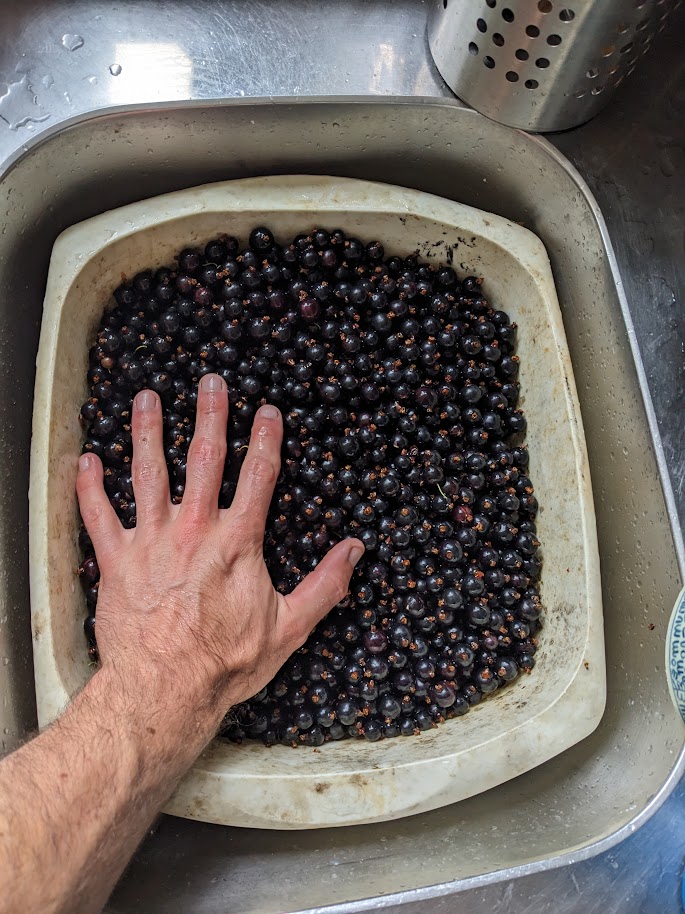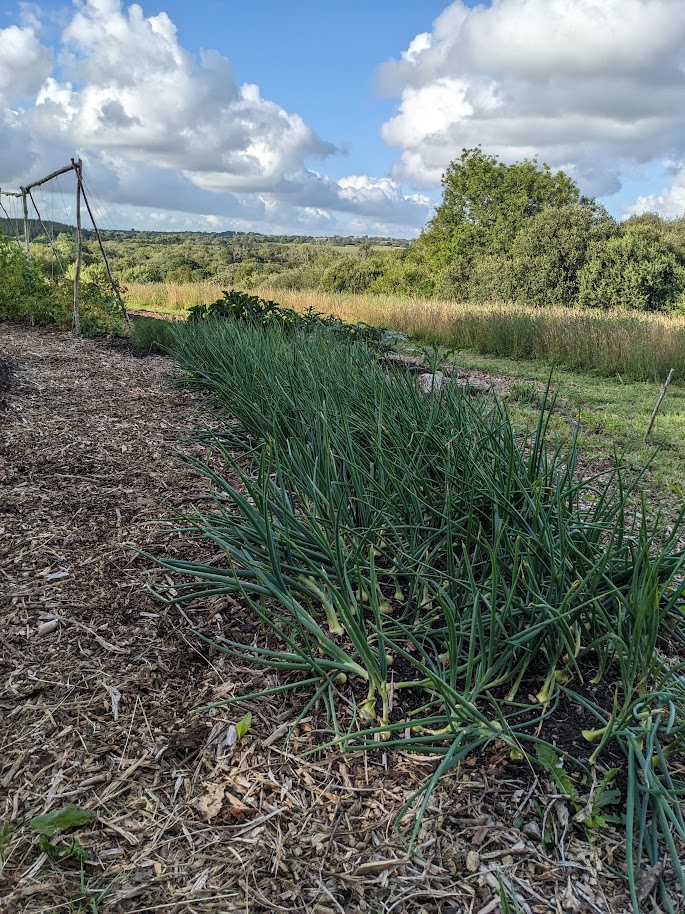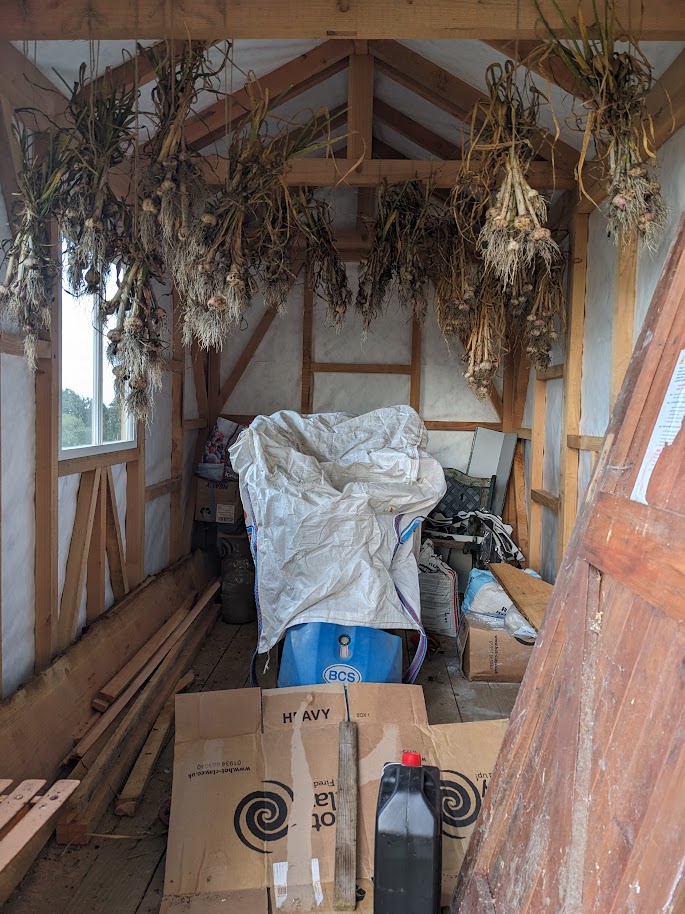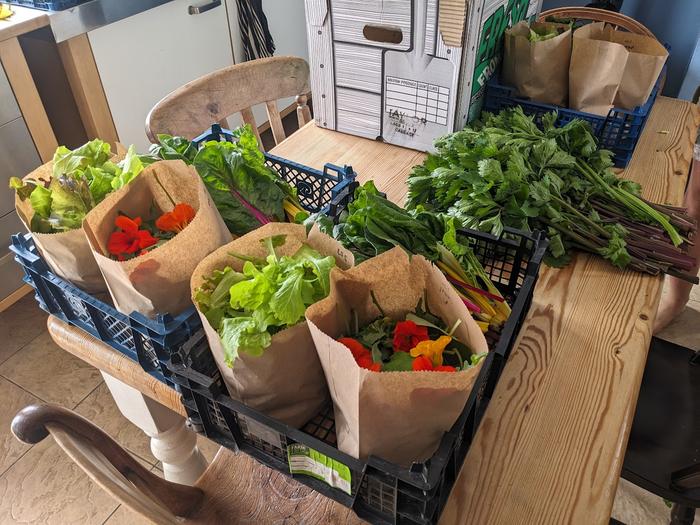

 1
1




How Permies works: https://permies.com/wiki/34193/permies-works-links-threads
My projects on Skye: The tree field, Growing and landracing, perennial polycultures, "Don't dream it - be it! "
 5
5




Nancy Reading wrote:
They have an usual flowering style, as well as the colour. The flowers seem to grow in a clump, almost as if it is a distortion, like fasciation. I'm keen to see whether either of these characteristics make it into their offspring - if I ever do get seed that is.



Small-holding, coppice and grassland management on a 16-acre site.
 4
4




Small-holding, coppice and grassland management on a 16-acre site.

 5
5




Live, love life holistically
 2
2




Small-holding, coppice and grassland management on a 16-acre site.












 5
5




Luke Mitchell wrote:Ulla, we tend to grow a lot of both. This year we probably won't have as many winter squash as usual - if you take a look at some of my earlier posts in this thread, you'll see I filled my house with them last year!
I made the mistake of planting them in some unfinished compost this time around, as a bit of a trial and because I wanted to clear the compost heap to start over. I think it was less nutrient-dense than I expected and the squash have taken a long time to get going. I am still hopeful, however, as we usually don't pick the fruits until September and, as this summer July has been unusually wet, we might get a long, warm, dry September to help speed them along.
Beautiful squash, by the way!
Live, love life holistically
 6
6




Luke Mitchell wrote:I'm back and, this year, I'm hoping that the new comers to the small-holding might get me to the 12 species requirement!
To recap, so far I have harvested 2,000kcal or more of:
Potatoes Peas Courgettes Squash Brussel sprouts
I've probably harvested more than that in kale too but I never weight it. The kales I grow are perennial so I just pick what I need and let it regrow.
This year I have been growing:
Broad beans French beansGarlic Onions Leeks Rhubarb Artichokes, although I'm not expecting a yield from this yet Blackcurrants Gooseberries Raspberries
As well as the usual herbs, salad greens, edible flowers and the asparagus, which is slowly getting established.
Hopefully 7 of the above will yield more than 2,000 kcals!
Small-holding, coppice and grassland management on a 16-acre site.












 4
4




Live, love life holistically
 5
5




Ulla Bisgaard wrote:Have you considered tree collards? In our garden they have been a big success. You would probably have to give them some protection during the winter, but here we harvest them all year round. I have 15 and they produce enough that we also use them as animal feed.
Ulla Bisgaard wrote:Are you guys going to try growing a winter garden? I see a lot of homesteaders growing in caterpillar tunnels during winter.
Small-holding, coppice and grassland management on a 16-acre site.












 3
3




Live, love life holistically
 8
8





Small-holding, coppice and grassland management on a 16-acre site.












 8
8




Live, love life holistically












 2
2




Luke Mitchell wrote:To complete this BB I need to harvest 2000 kcal of 2 more species.
How Permies works: https://permies.com/wiki/34193/permies-works-links-threads
My projects on Skye: The tree field, Growing and landracing, perennial polycultures, "Don't dream it - be it! "
 2
2




Nancy Reading wrote:
Luke Mitchell wrote:To complete this BB I need to harvest 2000 kcal of 2 more species.
You're doing so well! Those parsnip look great. Carrots and Swede might be good for calorie crops? I've been pleased with how well my swede grew -at least last year -none of my main root crops came to anything this year as birds scratched up all the seed.
What variety is your artichoke? Those buds look an impressive size, and so spiky!
Ulla Bisgaard wrote:Because of what you showed me, I actually planted summer squash this year, and are happy I did it.
Small-holding, coppice and grassland management on a 16-acre site.
 5
5




Small-holding, coppice and grassland management on a 16-acre site.

|
This one time, at band camp, I had relations with a tiny ad.
The new permaculture playing cards kickstarter is now live!
https://www.kickstarter.com/projects/paulwheaton/garden-cards
|








